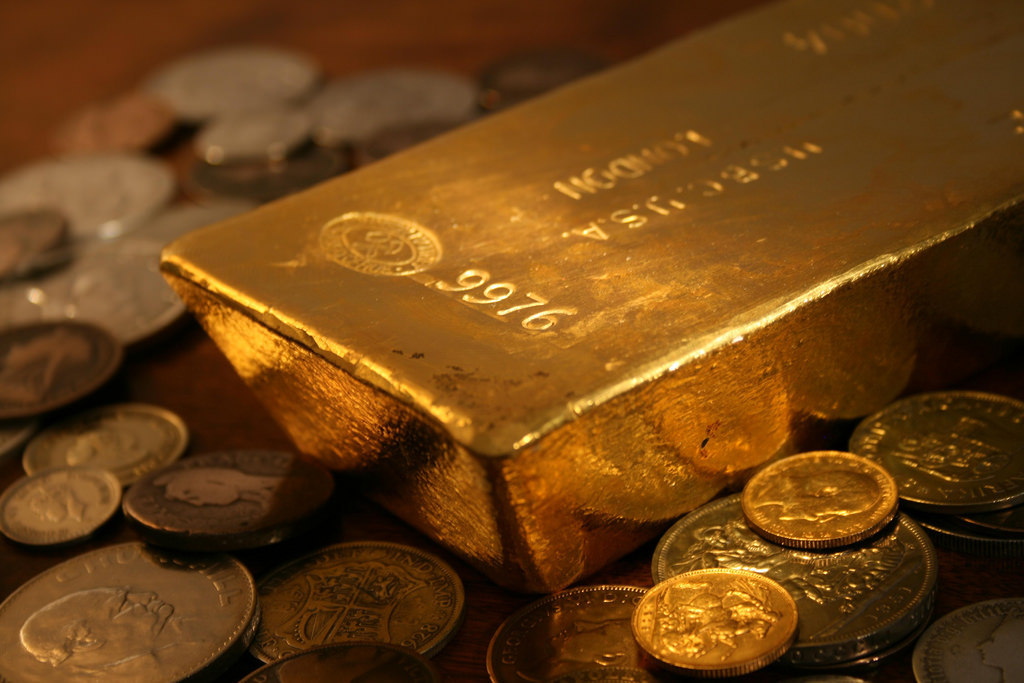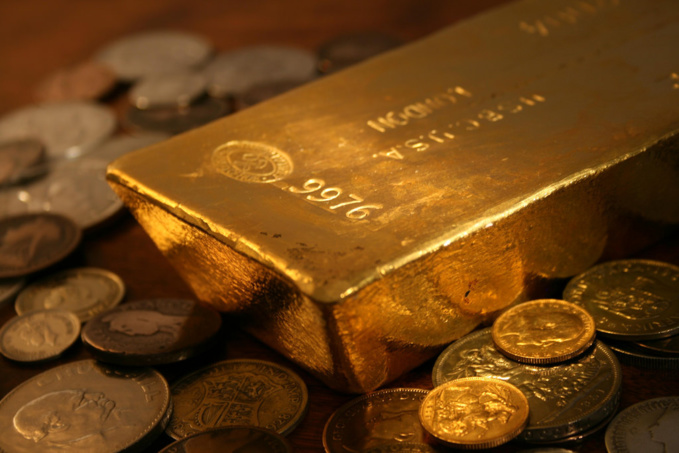Global demand for gold in 2016 rose to 4.3 thousand tons, exceeding the previous year by 2.2%, according to the World Gold Council (WGC). In the past year, gold was particularly popular among financial investors as influx of gold in ETF has exceeded 660 tons. At that, revenues first ten months of the year brought bulk of revenue, when price of gold temporarily stuck above $ 1,2 thousand per ounce. In November and December, investors drastically revised their priorities due to victory of Donald Trump and tightening of the US monetary policy. Demand for precious metals among private investors (in the form of coins) decreased slightly - by 10 tons to 1029 tons. Indian investors, the largest consumers of this product, trimmed demand (by 33 tons to 162 tons), while Chinese investors have increased their consumption (by 25 tons to 285 tons).
However, investment demand was largely offset by sale of precious metals from reserves of central banks, as well as decline in demand from the jewelry industry. During the previous four years, central banks kept total demand for gold at around 600 tons. However, the figure shrunk to 384 tons in 2016, which was the minimum value in six years. The major buyers of gold were central banks of Russia, China and Kazakhstan. Major sellers of precious metal in 2016 became the Central Bank of Venezuela, Azerbaijan, Argentina and Jordan, thus supporting stability of the national currency.
For the jewelry industry last year was the worst in seven years. The demand for gold decreased by 15% compared with the previous year, to 2,042 tonnes, against a background of falling demand from the largest consumers - China and India. Thus, in 2016 demand for gold jewelry in India declined by 22% to 514 tons, in China - 17%, to 629 tons.
Julius Baer commented on the situation in early February:
"The US president Donald Trump continues to shake financial markets. His comments about overpriced US dollar weakened US currency and supported the precious metals. Gold prices have risen by 1.3% and again exceeded $ 1,200 an ounce. Do not underestimate degree of the dollar’s influence on the gold market. Over the past 40 years, gold prices fell by an average of 1.1%, as the dollar strengthened and grew on average by 4.8% when the US currency weakened. Given our expectations of improved outlook for US economic growth, raised interest rates and strengthening of the dollar, we maintain a cautious stance on gold. At the same time, we recognize the risk of rising prices, coupled with recent actions taken by the president of Trump. If Trump, as some fear, becomes an "unmanageable weapon", the uncertainty will increase, which will fuel demand for protective assets and cause a significant increase in price of gold.
Meanwhile, prices for silver gained 2.5% and reached level of $ 17.55 per ounce. Given silver’s dependence on investment demand, the metal should continue to follow gold. Industrial demand has become less relevant due to substitution caused by price level and volatility. It primarily concerns solar energy. As number of solar energy generation units put into operation has been growing by 25% per year since 2010, corresponding demand for silver remained stable, "- notes Carsten Menke, an analyst at commodity markets at Julius Baer.
source: reuters.com
However, investment demand was largely offset by sale of precious metals from reserves of central banks, as well as decline in demand from the jewelry industry. During the previous four years, central banks kept total demand for gold at around 600 tons. However, the figure shrunk to 384 tons in 2016, which was the minimum value in six years. The major buyers of gold were central banks of Russia, China and Kazakhstan. Major sellers of precious metal in 2016 became the Central Bank of Venezuela, Azerbaijan, Argentina and Jordan, thus supporting stability of the national currency.
For the jewelry industry last year was the worst in seven years. The demand for gold decreased by 15% compared with the previous year, to 2,042 tonnes, against a background of falling demand from the largest consumers - China and India. Thus, in 2016 demand for gold jewelry in India declined by 22% to 514 tons, in China - 17%, to 629 tons.
Julius Baer commented on the situation in early February:
"The US president Donald Trump continues to shake financial markets. His comments about overpriced US dollar weakened US currency and supported the precious metals. Gold prices have risen by 1.3% and again exceeded $ 1,200 an ounce. Do not underestimate degree of the dollar’s influence on the gold market. Over the past 40 years, gold prices fell by an average of 1.1%, as the dollar strengthened and grew on average by 4.8% when the US currency weakened. Given our expectations of improved outlook for US economic growth, raised interest rates and strengthening of the dollar, we maintain a cautious stance on gold. At the same time, we recognize the risk of rising prices, coupled with recent actions taken by the president of Trump. If Trump, as some fear, becomes an "unmanageable weapon", the uncertainty will increase, which will fuel demand for protective assets and cause a significant increase in price of gold.
Meanwhile, prices for silver gained 2.5% and reached level of $ 17.55 per ounce. Given silver’s dependence on investment demand, the metal should continue to follow gold. Industrial demand has become less relevant due to substitution caused by price level and volatility. It primarily concerns solar energy. As number of solar energy generation units put into operation has been growing by 25% per year since 2010, corresponding demand for silver remained stable, "- notes Carsten Menke, an analyst at commodity markets at Julius Baer.
source: reuters.com



















